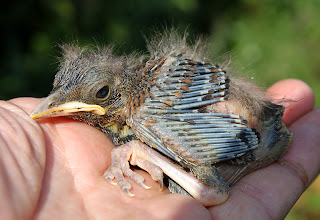There are not many words or pictures today after I spent ages trying to take photographs of a juvenile Wheatear. I took even longer trying catch it when all the time the little devil just gave me the run around, standing right next to the spring trap a couple of times. Part of the problem is the meal worms which have enjoyed a life of luxury and contentment in a tub of bran since April, but now in August just don’t wriggle enough to attract the attention of a sharp eyed chat. At least I got four frames before the bird spotted me hiding in the boulders then shot off up the sea wall.

As usual I was on a Pilling run, Lane Ends to Pilling Water where the incoming tide brought a few Augusty things in. Waders clocked up were 60 Lapwing, 28 Dunlin, 2 Greenshank, 1 Common Sandpiper, 12 Redshank, 2 Golden Plover and 440 Curlew. Just 2 Grey Heron today with a nil count for Little Egret again but further signs of autumn with 3 Great-crested Grebe out near the tide line.


A Peregrine put in the briefest of appearances then seemed to head off in the direction of Pressall Sands where surely there would be more wader food. There have been good numbers of Sandwich Terns lately, a sure sign that some will find their way into the bay as far as Pilling and Cockerham, so no surprise to see two today associating with circa 125 Black-headed Gulls. The Greylags increase again with 90 today.
Once again the passerine count proved abysmal, with 1 Pied Wagtail, 4 Linnet, 3 Goldfinch, 2 Greenfinch and 4 Skylark. Meanwhile the build-up of Swallows continues with c 300 feeding over the marsh and tideline today.
Nothing else to report but hopefully there’s more tomorrow, especially if I get chance for a run over to to the reptile shop and a supply of fresh meal worms.



































































